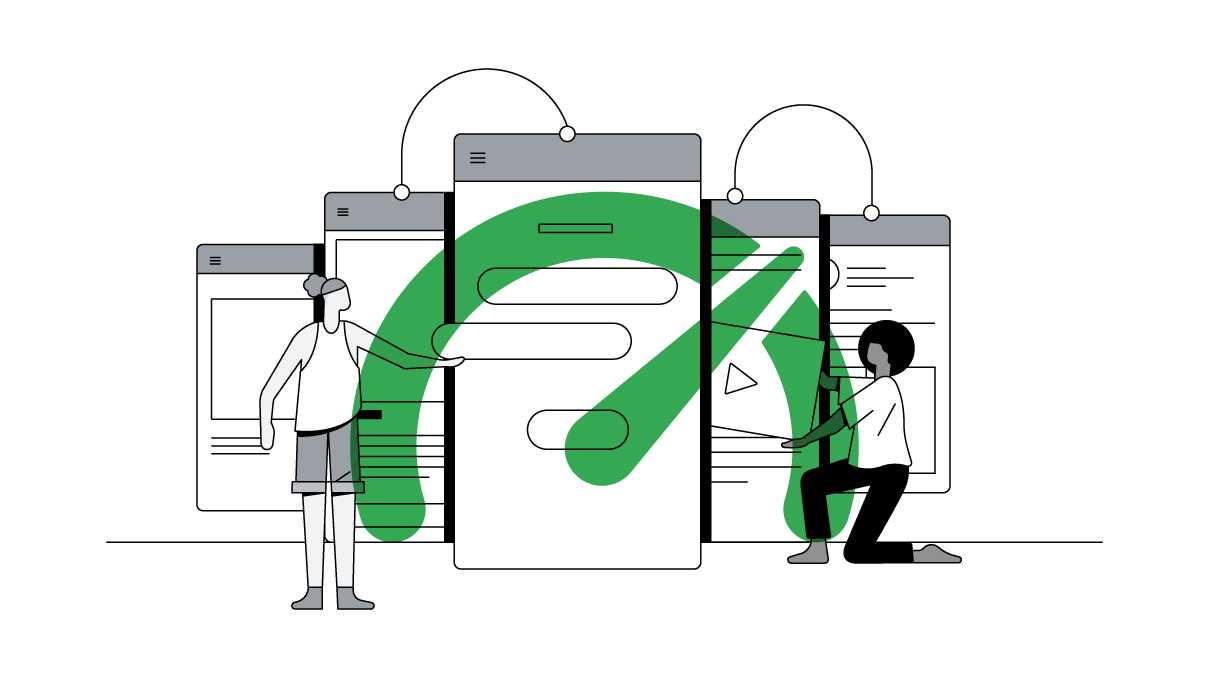BMW tasked Hamburg-based digital agency Jung von Matt with building a mobile website that works as well as their cars. Nine months later, the team had developed a site that set new standards in performance, design and usability. So, what’s it like? How did they do it? And how can other brands do the same?
About BMW
Luxury motorcars
Founded 1916
About
Jung von Matt
Advertising agency
Founded 1991
Goals
Refresh and improve mobile website
Build with speed, performance, design, and usability in mind
Approach
Employed web technologies Accelerated Mobile Pages (AMP) and Progressive Web Apps (PWAs)
Results
4X increase in people clicking from BMW.com to a BMW sales site
Up to 4X faster site load times
50% growth in mobile users
49% more site visits from search engine optimisation than old site
BMW is one of the largest and most coveted premium automotive brands in the world. Since starting life in 1916, it’s come to represent the epitome of quality, style, innovation, and performance. So, when BMW’s digital team decided to refresh and improve its mobile website, it had a pretty clear set of expectations as to how it should work, look and feel.
“At BMW, we are focusing on customer centricity in everything we do,” says Global Head of Digital Marketing Joerg Poggenpohl.
“It’s the same with our website. Right from the start, our goal was to attract new car enthusiasts with highly engaging content – and in a way that tangibly reflected our vehicles. To do that, we needed the brand’s new digital home to become a data-driven content platform, built around high-performance technologies.”
Today, BMW.com is one of those sites that audiences can’t help but love. It loads fast, remains stable and offers smooth navigation under the most trying of network environments. It’s also protected within a secure HTTPS environment.
“We wanted to wow users with high-quality images, smooth full-screen videos and state-of-the-art interactive design,” explains Thomas Feldhaus, managing director at Jung von Matt/NEXT ALSTER.
“Today’s users have very high expectations. We needed the site to start fast – and stay fast – with nothing slowing them down. That’s especially important given that 50% of internet users are now on mobile.”
So, how did BMW and Jung von Matt do it? Working with Google’s team of mobile experts, the team used a number of modern web technologies together with innovative techniques.
1. Accelerated Mobile Pages (AMP)
AMP is an open-source HTML library that allows developers to create smooth and compelling web pages that load pretty much instantly. In fact, the median time it takes to load an AMP from Google Search is less than half a second, which is why the technology is now commonly used by the likes of Google, Twitter and others.
And because interactive capabilities like product search, filters, and infinite scroll are supported in AMP, e-commerce websites can rest assured knowing their content can be engaging and fast.
That was especially pertinent for BMW, because it allowed them to deliver very high-quality content, without compromising load times.
“Mobile speed was at the heart of every decision,” says Jung von Matt’s Executive Creative Director Max Lederer. “No feature would make it on to the site if it slowed it down."
Let’s look under the hood here, just for a moment: the reason for all that speed is that AMP pages are built using three core components: AMP HTML, AMP JS, and AMP Cache. (Read on to learn more about AMP here.)
2. Progressive Web Apps (PWAs)
PWAs are modern websites that use state-of-the-art technologies (like service workers), to offer fast, reliable, smooth and secure web experiences. That means they’re likely to attract more users, drive engagement and improve conversion rates.
By following best practices for search engine friendliness (or ‘indexability’), PWAs can also be more easily discovered by search engines. They respond quickly to user interactions too, and even work well under poor network conditions.
What’s more, PWAs can live on the user's home screen, with no need to install them like an app. Immersive full-screen experiences and web push notifications also help drive user engagement in secure HTTPS environments. (Learn more about PWAs here.)
3. AMPs and PWAs: The ultimate duo
The other good thing about AMP and PWA technologies is that while both offer a very distinct set of benefits, they also work extremely well when used together.
For example, AMP is a great way to onboard users, because it makes sites easy to find and quickly serves up rich and engaging content. AMP components can also be used to ‘warm up’ a PWA, which helps users move swiftly and smoothly into more dynamic parts of a site. Plus it offers advanced features, like ‘add to home screen’ options, or push notifications for more loyal users.
Thanks to these approaches, BMW.com has set new mobile standards – and those new standards have reaped valuable rewards. For example, the proportion of people clicking from BMW.com to a BMW sales site has soared from 8% to 30%, nearly four times higher than before.
“The new mobile site also loads three to four times faster now, and the number of mobile users has risen by 50%,” says Feldhaus.
On top of that, search engine optimisation now generates 49% more site visits than the old site. “We’re delighted with results,” he affirms. “It’s been an unforgettable journey.”





